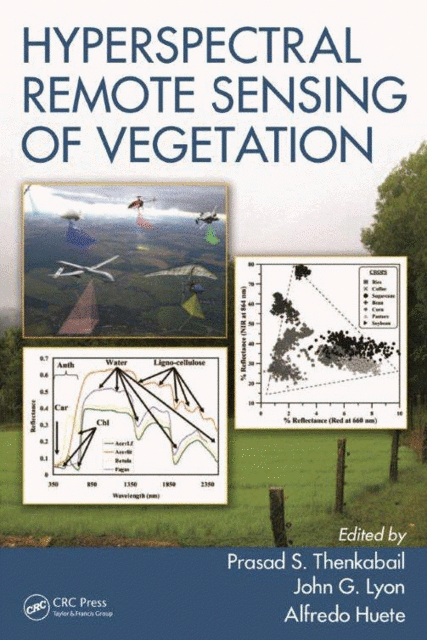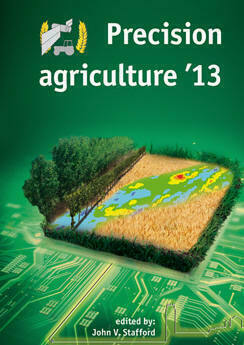|
|
 |
|
Hyperspectral
Remote Sensing of Vegetation ---
Published October
25th 2011 by CRC Press – 781 pages
Hardback: 978-1-43-984537-0
Price:
$198.00
Description
Hyperspectral
narrow-band (or imaging spectroscopy) spectral data are fast emerging
as practical solutions in modeling and mapping vegetation. Recent
research has demonstrated the advances in and merit of hyperspectral
data in a range of applications including quantifying agricultural
crops, modeling forest canopy biochemical properties, detecting crop
stress and disease, mapping leaf chlorophyll content as it influences
crop production, identifying plants affected by contaminants such as
arsenic, demonstrating sensitivity to plant nitrogen content,
classifying vegetation species and type, characterizing wetlands, and
mapping invasive species. The need for significant improvements in
quantifying, modeling, and mapping plant chemical, physical, and water
properties is more critical than ever before to reduce uncertainties in
our understanding of the Earth and to better sustain it. There is also
a need for a synthesis of the vast knowledge spread throughout the
literature from more than 40 years of research.
Hyperspectral Remote
Sensing of Vegetation integrates this
knowledge, guiding readers to harness the capabilities of the most
recent advances in applying hyperspectral remote sensing technology to
the study of terrestrial vegetation. Taking a practical approach to a
complex subject, the book demonstrates the experience, utility, methods
and models used in studying vegetation using hyperspectral data.
Written by leading experts, including pioneers in the field, each
chapter presents specific applications, reviews existing
state-of-the-art knowledge, highlights the advances made, and provides
guidance for the appropriate use of hyperspectral data in the study of
vegetation as well as its numerous applications, such as crop yield
modeling, crop and vegetation biophysical and biochemical property
characterization, and crop moisture assessment.
This comprehensive
book brings together the best global expertise on hyperspectral remote
sensing of agriculture, crop water use, plant species detection,
vegetation classification, biophysical and biochemical modeling, crop
productivity and water productivity mapping, and modeling. It provides
the pertinent facts, synthesizing findings so that readers can get the
correct picture on issues such as the best wavebands for their
practical applications, methods of analysis using whole spectra,
hyperspectral vegetation indices targeted to study specific biophysical
and biochemical quantities, and methods for detecting parameters such
as crop moisture variability, chlorophyll content, and stress levels. A
collective "knowledge bank," it guides professionals to adopt the best
practices for their own work.
|
|
|
|
 |
|
Precision agriculture '13
edited by: J.V. Stafford
2013, 824
pages, hardback, edited volume
Hardback: 978-90-8686-224-5
Published by Wageningen Academic
Publishers 2013, 825 pages, 378 illustrations, 208 illus. in
color.
Price:
$165.00
Description
Precision agriculture is now 'main stream' in
agriculture and is playing a key role as the industry comes to terms
with the environment, market forces, quality requirements,
traceability, vehicle guidance and crop management. Research continues
to be necessary and needs to be reported and disseminated to a wide
audience.
This book contains peer reviewed papers presented at the 9th European
Conference on Precision Agriculture, held in Spain. The papers reflect
the wide range of disciplines that impinge on precision agriculture:
technology, crop science, soil science, agronomy, information
technology, decision support, remote sensing and others. The broad
range of research topics reported will be a valuable resource for
researchers, advisors, teachers and professionals in agriculture long
after the conference has finished.
Download Table of Contents of this book
|
|
